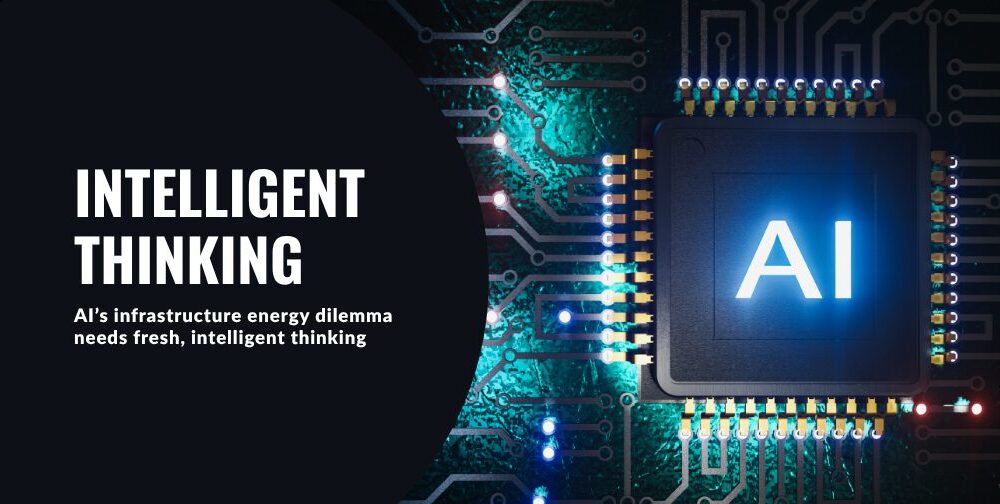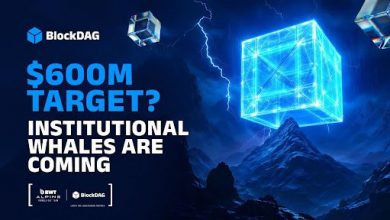AI’s infrastructure energy dilemma needs fresh, intelligent thinking

Massive language models and generative artificial intelligence (AI) pipelines are multiplying at breakneck speed, but the default answer remains familiar: build another supersized data centre campus.
That reflex dates back to the 2010s and is already colliding with physical environmental and geopolitical limits. A smart path disperses compute, storage, and risk across decentralized cloud networks that can tap into idle capacity almost anywhere that energy is cheaply and abundantly available.
In early July, an AI-infrastructure specialist – CoreWeave – announced plans to absorb a large crypto mining operator – Core Scientific – in a $9 billion all-stock deal. Notably, the acquisition was primarily motivated by control of 1.3 gigawatts of electricity contracts rather than cutting-edge hardware.
The pivot from coins to chips is revealing a clear and brutal truth that, in the centralized model, the decisive asset is no longer silicon but kilowatts.
Elsewhere in the world, we see countries innovating to meet AI energy challenges. China, for example, has gone to locational extremes with the Yaijan-1 facility, perched 3,600 metres above sea level on the Tibetan Plateau, just to rely on the thin air and sub-zero nights for free cooling.
The gymnastics needed to keep conventional server farms viable are becoming increasingly difficult to establish and maintain. Even with all these feats being taken, they cannot outrun demand curves.
An international energy agency assessment pegs global data centre electricity usage at =415 TWh in 2024, with projections suggesting it will more than double to almost 1,000 TWh by 2030.
Scaling the old way increasingly means bidding wars for grid capacity and coolant, not breakthroughs in efficiency. This problem is undeniable and requires solutions before it becomes too late to address.
Distributed nodes solve the grid puzzle
Decentralized clouds invert the equation, offering the ability to soak up stranded renewables and smooth out local peak loads through compact, containerized nodes dropped into rural micro-grids and industrial parks.
Since workloads travel to data rather than the reverse, transmission losses shrink and latency improves, two critical elements for the emerging AI services sitting at the network edge.
Geographical spread also helps support resilience, as when a node fails or a regional grid buckles under heat wave stress, jobs are automatically re-sharded across the remaining mesh. The architecture resembles the internet’s packet-routing logic: redundancy by design, not by adding ever-larger backup generators.
Policymakers can boost this adoption by reserving preferential tariffs for operators that prove genuine distribution and by bringing in standards for interoperability so that nodes from different vendors interlock seamlessly.
Stuck in a world that’s racing to electrify everything, steering AI’s footprint toward underutilized and decentralized kilowatts is a better and safer path overall.
It’s time to retire the warehouse mentality
AI workloads are global, bursty, and intrinsically parallel – all characteristics built for distributed execution that can achieve true efficiency.
Doubling down on mega-farms risks an arms race of power purchase agreements, stranded assets, and public relations blowups when cooling towers run dry. Instead, incentives should flow to architectures that are geographically diffuse, energy-aware, and cryptographically secure.
Industrial age infrastructure solves yesterday’s problems; tomorrow’s challenges demand fresh, intelligent, and efficient ideas.
Decentralized cloud networks already exist, are tested in production, and are capable of scaling without consuming an entire nation’s worth of electricity. The moment has arrived to build out that mesh, before another gigawatt disappears into a single postcode.
Today’s decisions on how to build and scale AI infrastructure will have ripple effects for years to come. It’s time to choose decentralized clouds, not more mega-server farms.
About the author
Kai Wawrzinek, Co-Founder, Impossible Cloud & Impossible Cloud Network
Kai is a seasoned entrepreneur with a Ph.D. in Law and a proven track record of building successful ventures. Recognizing the need for enterprise-grade solutions in the web3 space, Kai founded Impossible Cloud Network (ICN), a decentralized cloud platform aimed at creating a decentralized alternative to monopolistic hyperscalers. Before ICN, Kai founded Goodgame Studios, a NASDAQ unicorn that employed over 1,000 people and generated more than €1 billion in revenue under his leadership.
Profile Links (X/LinkedIn)
X: https://x.com/KaiWawrzinek
LinkedIn: https://www.linkedin.com/in/dr-kai-wawrzinek/

Source: AI’s infrastructure energy dilemma needs fresh, intelligent thinking

